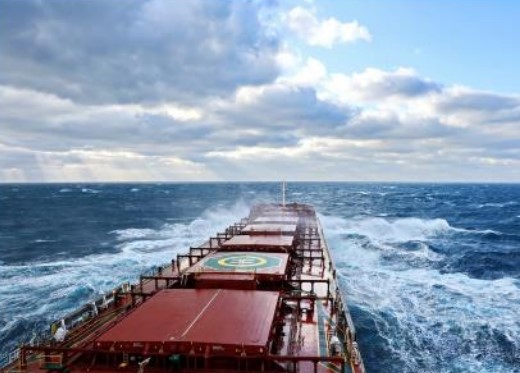
The Russia/Ukraine conflict has had a significant impact on CJC’s clients, raising multi-faceted issues on War Risk cover, dispute resolution and obligations under the Maritime Humanitarian Corridor scheme. In this article, we provide insights into the types of situations that our lawyers have been dealing with.
The first month of operations after a safe sea corridor reopened Ukraine’s ports for grain exports on 22 July saw shipments reach 650,000 tonnes, Reuters reported UN Secretary-General Antonio Guterres as telling a press conference held in Istanbul on 20 August 2022.
Kyiv and Moscow agreed a deal brokered by the UN and Turkey to unblock Black Sea shipments of foodstuffs and fertilisers, including ammonia, for an initial 120 days. During maximum daylight hours, Ukrainian vessels are guiding ships along a 310 nautical mile long, 3 nautical mile wide ‘Maritime Humanitarian Corridor’ which links Odesa, Chernomorsk and Yuzhny with the Istanbul strait. All ships are inspected in Turkey. On August 19, Ukraine’s government reported that 30 ships had departed in 30 days, with liftings confirmed as including 451,481 tonnes of corn, 41,622 tonnes of wheat and 6,000 tonnes of sunflower oil, according to a BBC report. The sea corridor is therefore offering an escape route for some of around 20 million tonnes of grain exports trapped in Ukraine since February, in turn bringing relief to food shortages and spiralling prices felt worldwide. The FAO food price index – the UN’s scale of world food prices – fell by almost 9% in the first weeks after the lifting of the blockade.
On 19 August, Bloomberg reported Chicago wheat futures falling to $7.43 a bushel – lower than before Russia’s invasion of Ukraine.
Vessel departures include ships blockaded in since the outbreak of the conflict, in turn easing the minds of underwriters. Tradewinds reports local sources indicating 37 bulk carriers as having been stuck in port at the war’s outbreak, laden with $251 million of cargoes. Under War Risk blocking and trapping clause terms, any ship held in a war zone for over a year can be claimed as a total loss.
Also underway are humanitarian operations run by the UN’s World Food Programme (WFP), with 12 vessels approved to carry grain cargoes in the coming weeks. Nevertheless, it is fair to note that combined sea and land grain exports from Ukraine through August
(948,000 tonnes) ran at half the rate achieved in the same month of 2021. Getting volumes up to the three million tonnes Ukraine’s government says it wants to export in September would demand the loading of 15 ships a day.

To date, many cargoes have been relatively small, with traders and shipowners still hesitant over committing. Lloyd’s of London insurer Ascot and broker Marsh established a maritime cargo and war insurance for grain and food goods leaving Ukrainian Black Sea ports with a $50 million cover per voyage as one of the first actions following the 22 July agreement. Meanwhile, Lloyd’s List insurance correspondent David Osler told the BBC that insurers are charging premiums of 1% or 2% of a ship’s value for every journey to and from Ukraine. “That compares with premiums of 5% or 10% that were being charged before the safe sea corridor was created,” he said. “The rates are reasonable, given the circumstances, but ship owners still won’t take the risk.” Very soon after the first ships became trapped in Ukrainian ports, CJC was called on to provide advice in relation to multiple issues, including on setting up payments of hire into escrow, pending determination of a dispute. In the following months, we provided extensive sanctions guidance to shipowners, advising them on the risks associated with potential fixtures. In the UK, where compliance is subject to the interpretation of OFSI (Office of Financial Sanctions Implementation) guidance, incoming payments from the account of a non-sanctioned entity which are made through a sanctioned bank can be frozen on receipt into a UK bank. CJC also offered specific advice on the relevant application process for licences.
Other issues arising through the spring and summer included:
– Whether the laying of mines and other steps to block navigation and the presence of Russian warships in the Black Sea came within the scope of off-hire provisions.
– Whether original voyage orders could be considered in breach of the safe port warranty or, if the vessel is off hire, whether owners are to be indemnified under the clause 8 general implied indemnity for loss of hire and other expenses.
– Owner obligations for care of the cargo on board, on whether and if so on what terms they should re-issue bills of lading when the original set cannot be retrieved from an agent’s office due to hostilities in the port.
Understandably, the opening of the safe sea corridor has shifted the focus significantly, with CJC engaged in loading and transit operations taking place after 22 July. Given that these operations are either underway at time of writing or have resulted in unresolved issues, it is not possible to go into specific cases here. However, in broad terms, it is possible to flag up the following areas as of particular and growing interest at this time:
-Issues relating to the integrity of cargo after prolonged periods of storage on board. On what terms and at whose expense voyages to discharge cargo are to take place, particularly where one or more parties to the various contracts of carriage for a vessel may have purported to exercise contractual rights of cancellation, and/or to have declared those contracts to be frustrated.
– The ability of vessels to potentially perform long voyages after prolonged periods of enforced inactivity, perhaps without proper maintenance.
Source: Campbell Johnston Clark

